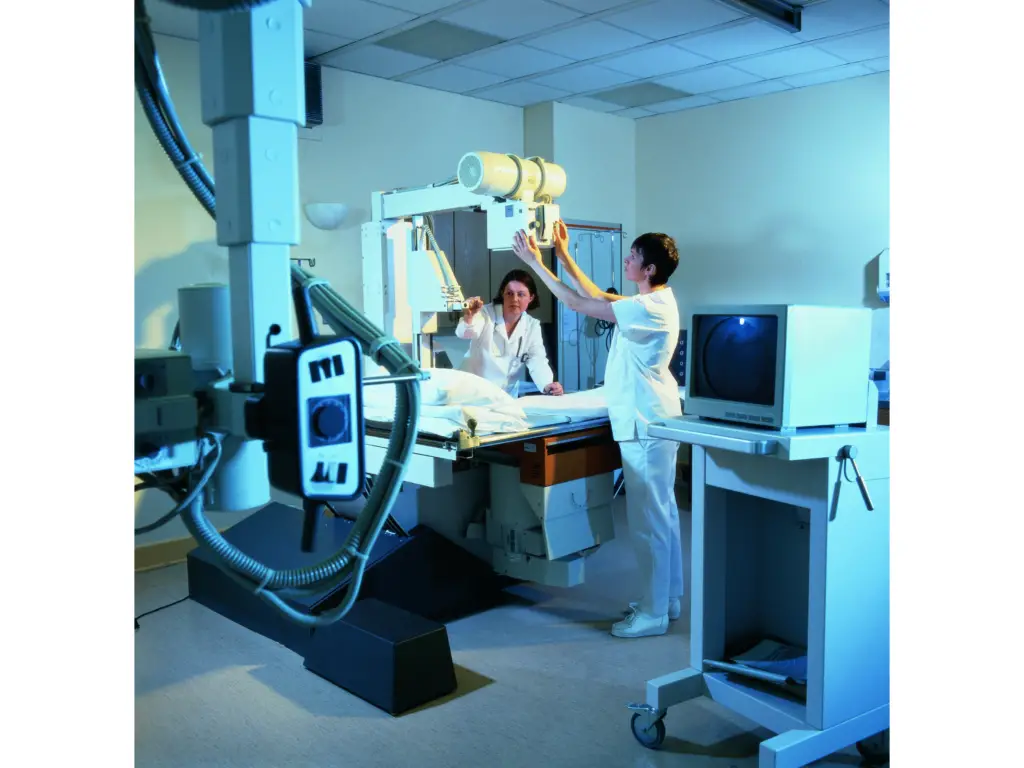Radiologic technology, once dominated by film X-rays, has undergone a meteoric rise driven by innovation. Today, it boasts a landscape teeming with advanced imaging modalities, AI-powered solutions, and groundbreaking techniques on the verge of reshaping healthcare. But what lies beyond the horizon? Let’s embark on a journey to decipher the future of radiologic technology, unearthing the possibilities that will redefine image-based diagnosis and patient care.
1. Artificial Intelligence: Beyond Automation, Towards Collaboration:
While AI’s initial foray focused on automating tasks like image analysis and report generation, its role is evolving. Future iterations will delve deeper, collaborating with radiologists as intelligent assistants. Picture AI systems that not only detect anomalies but also offer differential diagnoses, predict patient outcomes, and personalize treatment plans. This human-AI synergy will augment decision-making, elevate diagnostic accuracy, and unlock untapped insights from vast imaging datasets.
2. Molecular Imaging: Unveiling the Invisible:
Conventional imaging paints a structural picture, but the future lies in unveiling the functional and molecular underpinnings of disease. Techniques like PET-CT and SPECT will be further refined, offering more specific radiotracers targeting unique biological processes. Imagine pinpointing cancerous tumors at a cellular level, visualizing inflammation progression, or mapping neurological activity in real-time. This molecular revolution will pave the way for personalized medicine, enabling early intervention and targeted therapies.
3. Quantum Imaging: Bridging the Resolution Gap:
The quest for ever-finer details will be fueled by quantum technologies. Imagine MRI scanners with unparalleled resolution, resolving microscopic structures and visualizing brain activity with unprecedented clarity. Quantum X-ray technology promises superior penetration and image quality, revealing subtle tissue changes invisible to current modalities. These advancements will empower radiologists to delve deeper into the human body, unlocking a new era of early disease detection and diagnosis.
4. Personalized Imaging: Tailoring Techniques to the Individual:
The one-size-fits-all approach is fading away. Future imaging will be intricately tailored to individual patients, considering their specific anatomy, physiology, and disease risk factors. AI-powered algorithms will dynamically adjust scan parameters, radiation doses, and imaging protocols, optimizing image quality and patient comfort. This personalized approach will minimize unnecessary radiation exposure, streamline workflows, and ultimately lead to more accurate diagnoses and effective treatment plans.
5. Immersive Imaging: Beyond Flat Screens:
Radiologists will no longer be confined to viewing images on flat screens. Imagine holographic 3D reconstructions of organs, allowing them to virtually “walk through” a patient’s anatomy and examine lesions from all angles. VR and AR headsets will enable real-time image overlays during minimally invasive procedures, guiding surgeons with pinpoint accuracy and facilitating complex interventions. This immersive experience will revolutionize communication between radiologists and clinicians, leading to improved surgical outcomes and enhanced patient safety.
6. AI-powered Education and Training:
The ever-evolving landscape necessitates continuous learning for radiologic technologists. AI-powered tutors will personalize learning modules, identify knowledge gaps, and provide targeted feedback. Virtual reality simulations will recreate real-world scenarios, allowing trainees to hone their skills in a safe and controlled environment. This immersive learning experience will accelerate skill development, enhance competency, and ensure future generations of radiologic technologists are well-equipped to navigate the ever-changing field.
7. Tele-radiology: Bridging Geographic Barriers:
Distance will no longer be a barrier to accessing expert care. Tele-radiology platforms will leverage high-speed internet connectivity and secure cloud storage to transmit medical images across vast distances. Radiologists in remote locations will be able to provide real-time consultations, assist with complex diagnoses, and offer expert opinions, ensuring equitable access to quality healthcare regardless of geographical location.

8. Smart Imaging Devices: Point-of-care Precision:
Imaging will no longer be confined to centralized radiology departments. Imagine portable, AI-powered ultrasound devices seamlessly integrated into clinical workflows. These smart devices will enable real-time imaging at the point of care, facilitating immediate diagnosis and guiding interventions in emergency departments, intensive care units, and even at patients’ bedsides. This decentralized approach will expedite decision-making, improve patient outcomes, and contribute to efficient resource allocation.
9. Integration with Wearable Technology and Biosensors:
The lines between radiology and other healthcare disciplines will continue to blur. Biosensors and wearable devices will continuously collect physiological data, seamlessly integrating with imaging modalities. Imagine continuous cardiac monitoring alongside real-time MRI scans, revealing the dynamic interplay between tissue structure and function. This integrated approach will provide a holistic view of patients’ health, enabling predictive diagnosis, preventative measures, and personalized interventions.

